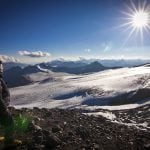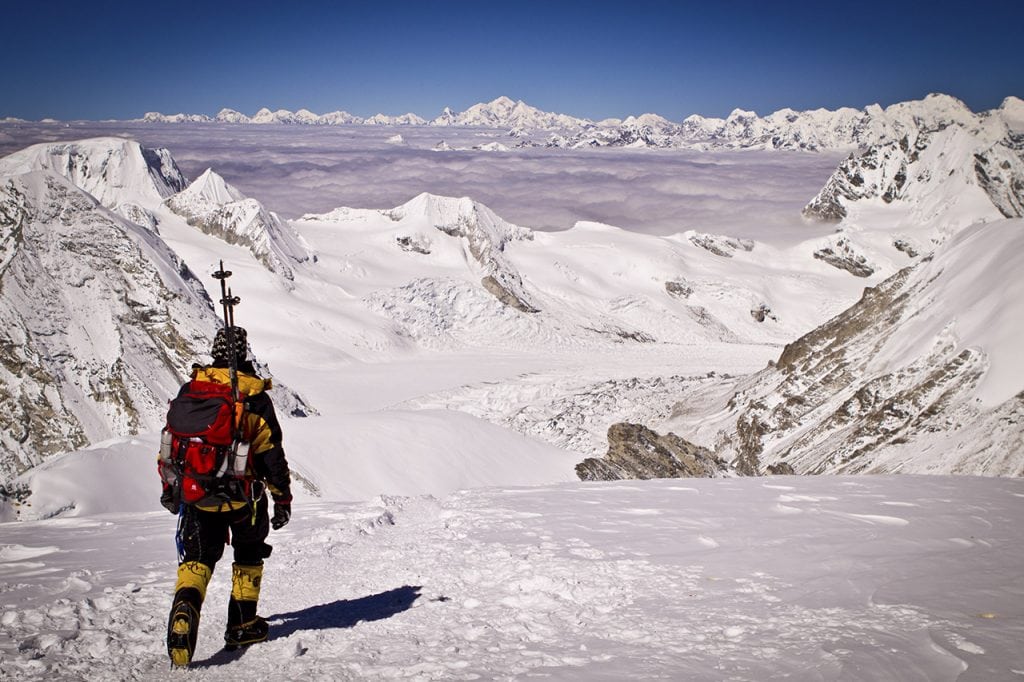This interview was initially conducted by Bryn Davies from Wired for Adventure.
Tell us about your early years. By the sounds of it, they weren’t easy, but you found a way to harness your focus and drive.
The Lebanese side of my family are both Christian and Jehovah’s Witnesses. The religion was imposed on me as a child, and I wanted nothing to do with it which led to complications a young boy shouldn’t have to navigate. In response, I rebelled. I was expelled from school, I was out on the streets, and I became a kid of the state living in a foster home all before the age of 14. I was fortunate to stumble into a powerlifting gym in Aylmer, Quebec at 15 where a local strongman named Ginaud Dupuis sought out kids like me that no one wanted to deal with. He trained us in his ways using advanced Qigong techniques, harnessing the power of nature for strength and taught us how to develop the mind, the body and the spirit. I broke a world record in deadlift, pulling 525 lbs at the age of 17. The world record wasn’t what was important to me. What was, was that I learned to believe in myself, that I mattered and that I developed a sense of worth after being written off by so many at such a young age.
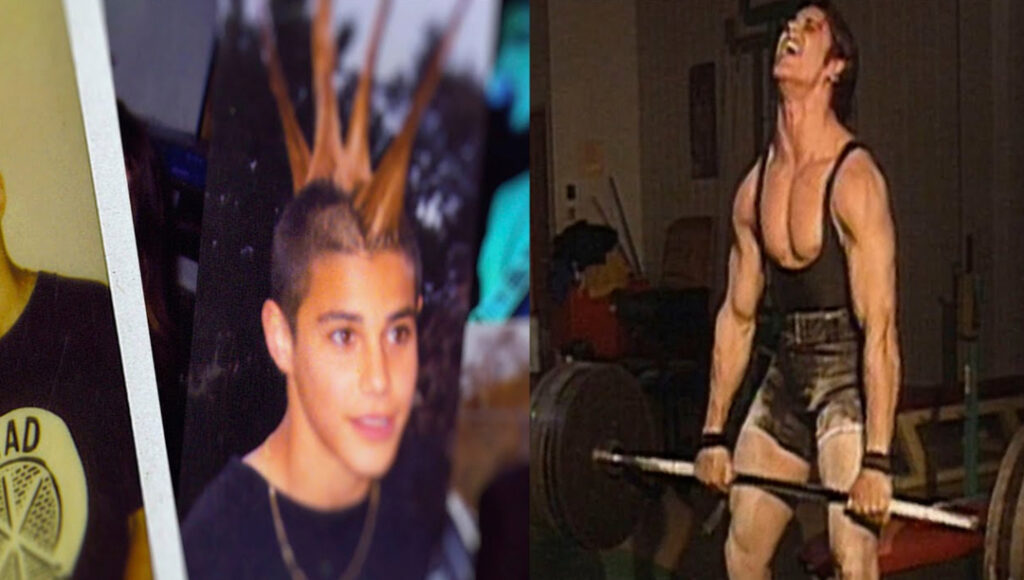
How did you get into mountaineering? Did you ever dream that you’d achieve as much as you have?
My mountaineering career began in 2005 with an invite to film an expedition to Mt. Everest basecamp. I was known as someone who was strong and competent with a video camera. I didn’t even know where Everest was located at that time. It just wasn’t on my radar. Sean Egan, who I was filming, was attempting to become the oldest Canadian to summit Everest, but he tragically died of heart failure. He never made it to the summit. I invested the next five years of my life attempting to honour his. My non-profit work was born out of his passing. I never imagined that my first trip to Nepal would have marked me the way it did and lead me to where I am today.
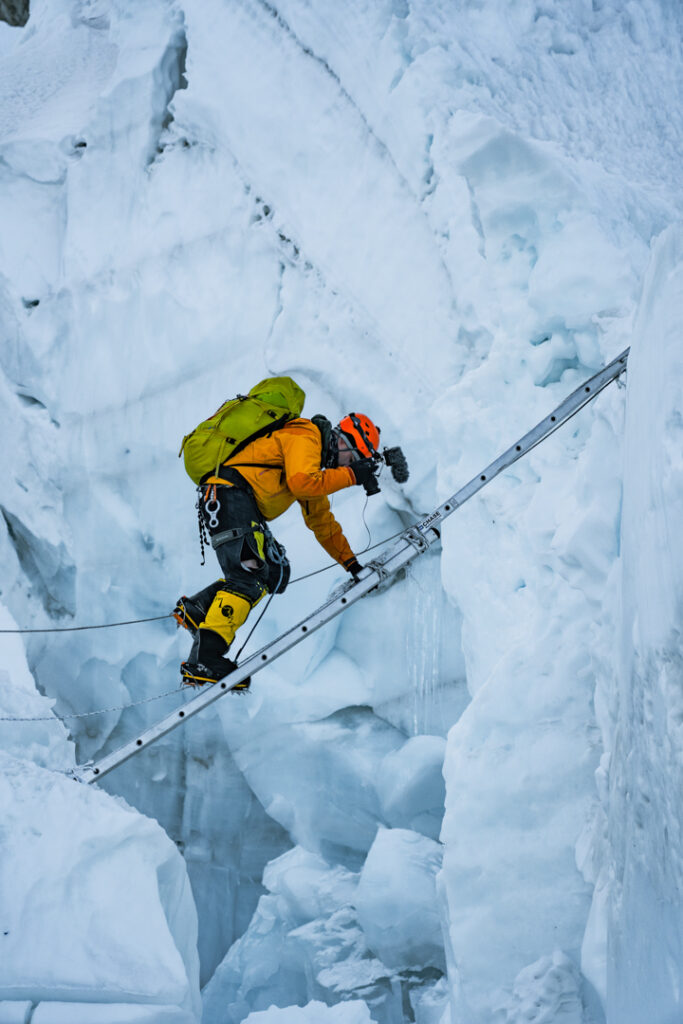
What’s been your most memorable project or ascent?
K2 winter and summer 2021 – hands down. And not because it was filled with joy, rather because of the mission that it became. It’s the expedition where all of my experience came together as a human being, an athlete, a friend, and a storyteller. It was a once in a lifetime expedition. PK Sherpa, my climbing partner and I were deep in the trenches and pulled off a small miracle with very limited resources against all odds. It was the most brutal experience of my career, but one I am deeply proud of.

When going for a shoot, how do you prepare your pack knowing you need essentials to survive but also your camera gear and equipment. What takes priority?
The cameras are the priority. Everything else related to climbing and my survival kit is an automated reflex. In 2014, I broke my back paragliding in Pokhara. I crash landed into a roof and split my L2 vertebrae in two pieces. It was a miraculous recovery. Since then, I’ve learned to work more intelligently and efficiently. I hire and train local people when I can and share credit with them. I’m of the philosophy to ‘save energy where you can and spend energy where you must’. In the end, the content responsibility is always on my shoulders as no one will do the work for me or carry and make the camera work when it matters. Shooting high reality above 8,000m is unfathomable. It’s a sufferfest. There is a constant risk of frostbite, edema from the energy expenditure and a whole array of other complications that arise when chasing talent into the death zone. Managing it all is a very delicate dance. Most of the time, I’m more concerned with my support crew than I am for my own well-being. I’ve always got a 30,000ft view on the situation: my team, the work, the mountain and everyone else around us.

Have you ever wanted to immerse yourself in the moment so much that you decided not to photograph it?
My mantra is ‘the most important stories are the most difficult to tell’. So, it’s always a fluid situation. I remember this line when situations become complicated. For example, the 2015 Earthquake. I was at ground zero and was hit by the avalanche at [Everest] basecamp. Filming while most peoples emotions were running high and on overdrive was not easy. It took me many years to learn to program my mind and compartmentalize my emotions. My job is not to feel or to have an opinion, sometimes I just need to get the shot. Yet at the same time, I feel everything and I am a very sensitive person. I am constantly making decisions to pivot and respond to what’s unfolding around me. PK Sherpa and I, my right-hand man, are often intertwined in other people’s drama in the high mountains. He’s an IFMGA guide and I understand the code of ethics and always choose to support him rather than ask him to support my filming efforts. He’s hard wired as a guide and always intervenes if he sees someone in distress or in an unsafe situation. The quiet moments are usually seized at night, under the stars, when all is still. Anyone who knows me knows I’m swimming in tech day and night so it’s important for me to create space to ground and be present. A pinch of Sherpa diamox (rum or whisky) is mandatory in the high mountains – when offered by a local team member, I never decline.
What’s your take on filming when lives are at stake?
In the beginning of my high-altitude filming career, I was overly sensitive to everyone and everything around me and recognized I just wasn’t getting the goods, so I had to adapt. It’s often when it’s difficult and when everything is going wrong that you need to be rolling. I’m always aware of where the line is. As I became a more competent climber, I began to see what I was filming through the eyes of a mountaineer, paying very close attention to the well-being of my subjects, how they conduct themselves, how they’re performing, ready to intervene at any time if no one else can. It’s about having the awareness of how serious a situation is and determining whether my assistance is truly required. If it is, the camera will not be in my hand.
How do you balance being a climbing partner/expedition member with being a filmmaker?
What’s most important to me today is that I show up as the best version of myself as a team member. Above all else, what matters to me is that everyone descends and returns home safely. Everything else is gravy. I want people to feel like I have their back and that they can rely on me. What I do is a 100% team effort, especially on 8,000m expeditions. The Sherpa climbers I have the privilege of working with make what I do possible and it’s incredibly important to me to ensure they have all the support they need to support my work. The mountains are an unforgiving office. There’s no room for error and Elia is a true professional, doing what it takes to get the shot The most important stories are the most difficult to tell.
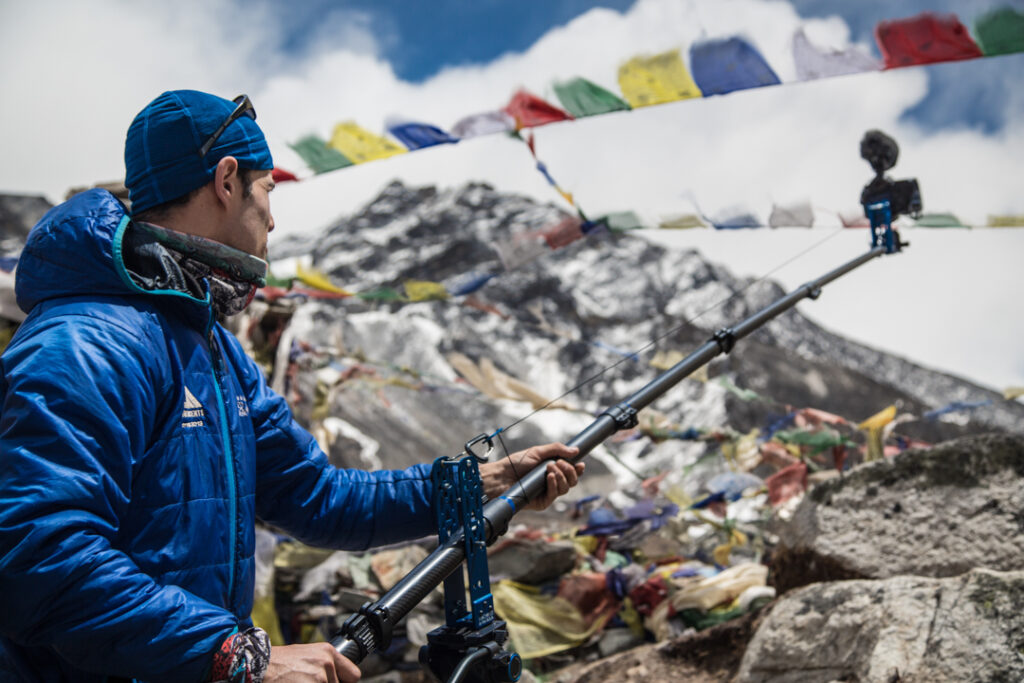
What sort of conversations do you have with the mountaineers you’re filming, with the above considerations in mind?
The first question I ask is: are we all in agreement that we film everything? Even when things become difficult? My current client and friend for example, who is attempting Everest without oxygen, it was important for me to know that he is prepared to listen to the lead guide, to turn back if asked, and if oxygen is required for his safety and the teams’ overall safety that he will comply. Planting this subconscious seed is crucial as the death zone can transform a person. I’ve seen people morph in ugly ways up high. Adversity reveals a man’s true character and the more programmed one is at sea level, the more automated the responses will be up high.
You’ve had first-hand experience of just how unforgiving the mountain can be, when you were on K2 documenting the attempted winter ascent of John Snorri and Ali and Sajid Sadpara. Can you tell us about your experience on the mountain during that winter?
I threw the expedition and production financing together last minute and ended up with Covid while acclimating in Nepal. I was quarantined as climbers were beginning their early rotations on the mountain. I was forced to shut the expedition down as a result. It was devastating. Seven days later, I recovered, tested negative, put all the pieces back in place and with the support of the Pakistani military, PK and I flew straight to basecamp from Skardu without being acclimated. It was brutal. We spent the season trying to keep up with John, Ali and Sajid who were very well acclimatized as they had been on the mountain for more than six weeks. Within a day of arriving, the Nepalese summited and Sergi Mingote died. A few days later, PK and I were on a summit push with John, Ali and Sajid which was ridiculous given we had just arrived, but we tried and did our best. The rock fall on K2 was deadly as well. It was as though the mountain was firing bullets at us. I was hit right on top of my helmet, an impact that could have killed me. Later, there was a logistical mess at Camp Three due to reckless planning by the main outfitter. After we retreated from Camp Three due to an oxygen management miscommunication, an issue that likely saved our lives, Atanas Skatov flew right over my head as I was rappelling down the Black Pyramid. I watched in horror as he tomahawked to his death. And then John, Ali and JP Mohr never returned. I just couldn’t believe what was happening. I was assisting the military by photographing what could have been our missing friends from the air. It was a coordinated effort between the Icelandic, Chilean, and Pakistani military. Sadly, our friends never returned.

After finding John Snorri’s body, you returned to K2 Base Camp with his family. Can you put into words how emotional that was?
The summer search effort was by far the most difficult expedition of my career. Finding your friends deceased on a mountain, then unable to do much because you were not supported, was brutal. When I first came upon John, examined the scene and then looked into his baby blue eyes, the tragic story revealed itself. We had to leave him there and that broke me. It could have been so different had people believed finding them was possible. To this day I question how it’s possible that I was the only person willing to take the risk on Sajid and help him find his father. Even my own production partners dropped me last minute because it was too risky. And that’s where the little 14-year-old showed up and said: don’t tell me I can’t do something. I flipped my world upside-down, took on foolishly high interest loans and went all in with whatever I could liquidate to make it happen. I just couldn’t sit and watch Sajid sit on the sidelines as others might potentially find his father and John. It would have broken him. I’m still deep in debt to this day, but I wouldn’t change a thing. Returning in 2022 with the Snorri family was equally as devastating. It felt like I was walking back onto a battlefield. I hadn’t fully healed my post-traumatic stress and there is a lot more to the story than people realize. I didn’t want to go back to Pakistan. My nervous system was completely disregulated, and my body was screaming not to return, but I knew I had to. For Lina, for John’s daughter and sisters, for Pakistan, for Iceland, and for my own healing as well. I knew I had information the families didn’t, and I knew by accompanying them to basecamp, it would make it just a little easier for them and give them a touch more comfort. It was heart-breaking watching Lina and John’s daughter Halle stare up at K2 from basecamp knowing they were that close to their father and husband and that there was nothing they could do. ‘I want my boys to know when they visit their father’s grave that he is actually in the ground’. That statement broke my heart. It’s complicated because there are ethical arguments as to why climbers should be left to rest, particularly given John could not be in a more complex spot, attached to a line surrounded by steep blue ice. That same season, over 150 climbers passed John and some very competent climbers raced to the top post-season in an attempt to break speed records, racing past John Snorri’s lifeless body. Imagine what the family felt? Where are your ethics? Disgusting.
Can you tell us more about Climb For Albinism?
In 2016, I was on a humanitarian mission in Africa and we travelled from South Sudan to Uganda and then to Kenya where I learned about the plight of persons with albinism in East Africa. I could not believe that they are hunted down for their body parts which are then sold on the black market for witchcraft purposes. A day before my departure home to Canada, I met Mariam Bandabu who had both her arms hacked off with a machete by a neighbour. She was pregnant at the time and her two-year-old son was in the room. The perpetrator left her to die. Miraculously she survived. I was deeply moved, by Mariam’s story and by the two little boys living in the safe house, funded by Under the Same Sun, who each lost a limb to poachers, that I just wanted to do something to help. I created an initiative where six women with albinism, including Mariam, climbed Kilimanjaro to show the world what they’re capable of. Given most are legally blind at that the sun is their enemy, climbing to the roof of Africa was no small task.
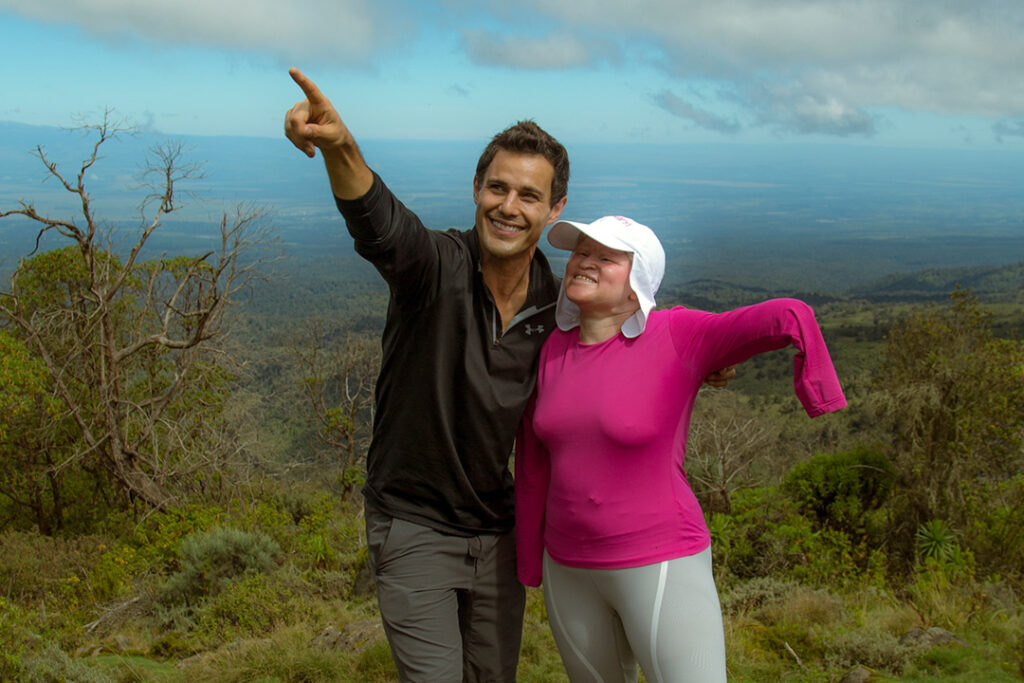
What do you hope Climb For Albinism achieves?
We want the world to know what’s going on, but we want to break the victim stereotype. This is what the community told me was needed. This is why I received the support from those fighting the good fight on the ground. More than ever, people with albinism need to see people who look like them achieving extraordinary things. The trauma persons with albinism face day to day is very real. The complexities vary across Africa and our project tells a continent-wide story through some very inspiring individuals. I am incredibly impressed with Mariam’s resilience. We developed an unlikely friendship and I plan on taking her back for another shot at the summit in the next year as she was unable to attain her goal due to health complications. I have no doubt the world will be inspired by her strength and resilience. She is a symbol of hope.
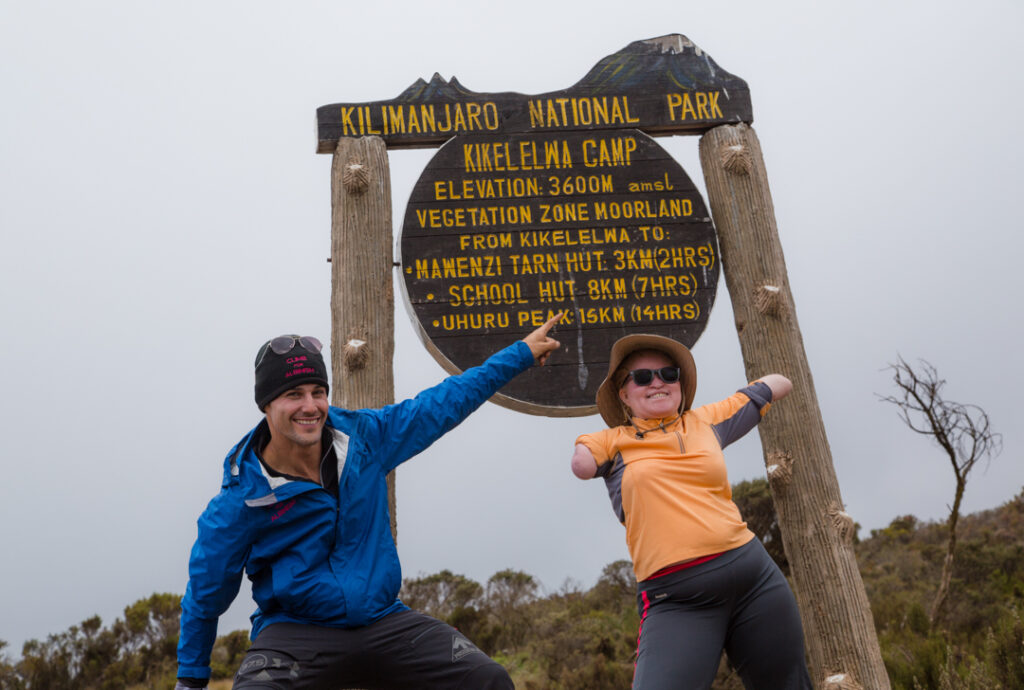
What would you say to readers who want to make the most of their time on this planet by seeing and doing more adventurous things?
I would say: take the jump. Life is short. Nature is a gift to us all and has so much to teach us. I try to say yes as often as I can and encourage people to do the same. If you can marry adventure with a purpose driven mission, in my opinion, this is the cocktail for an adventurous life well lived



